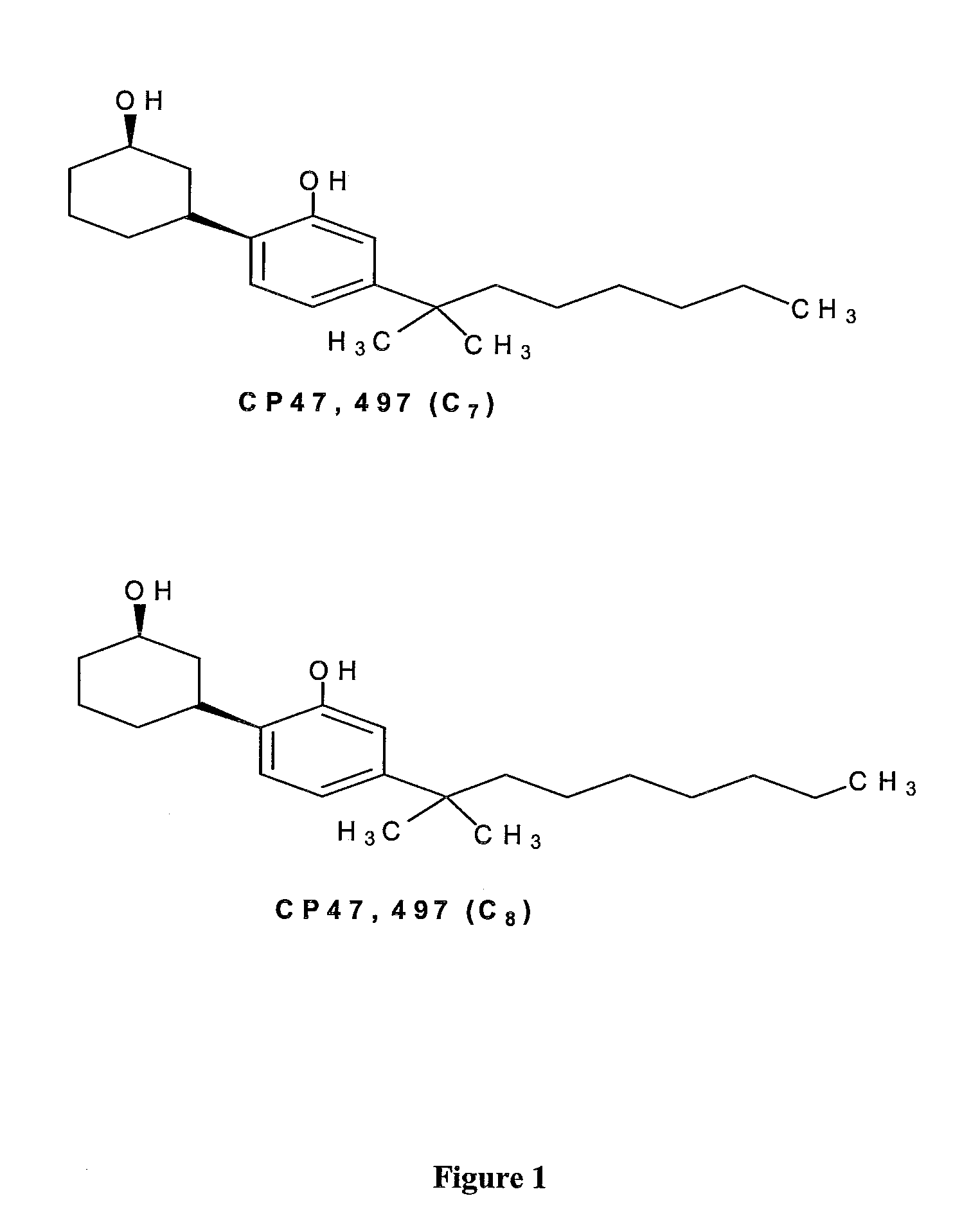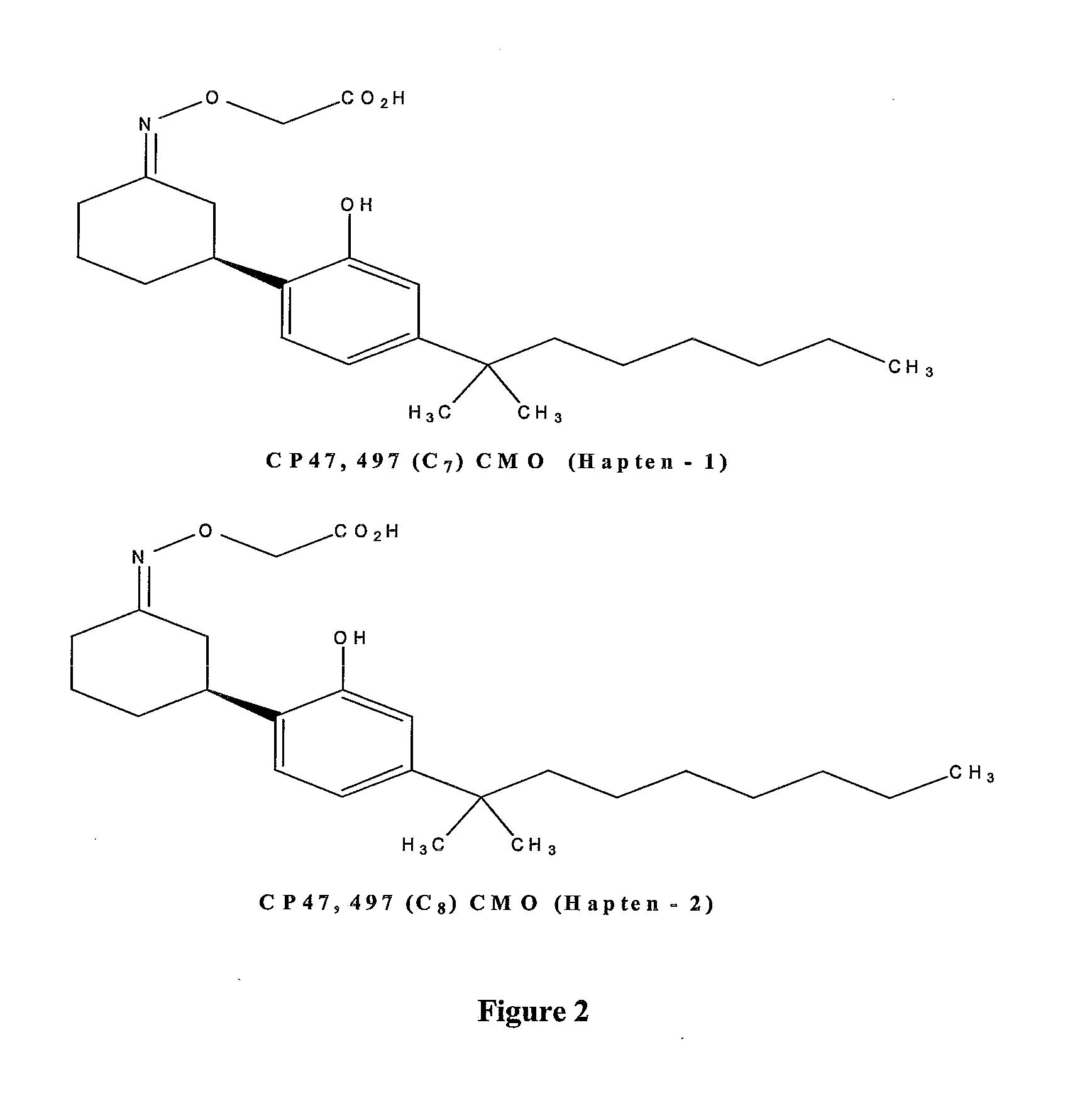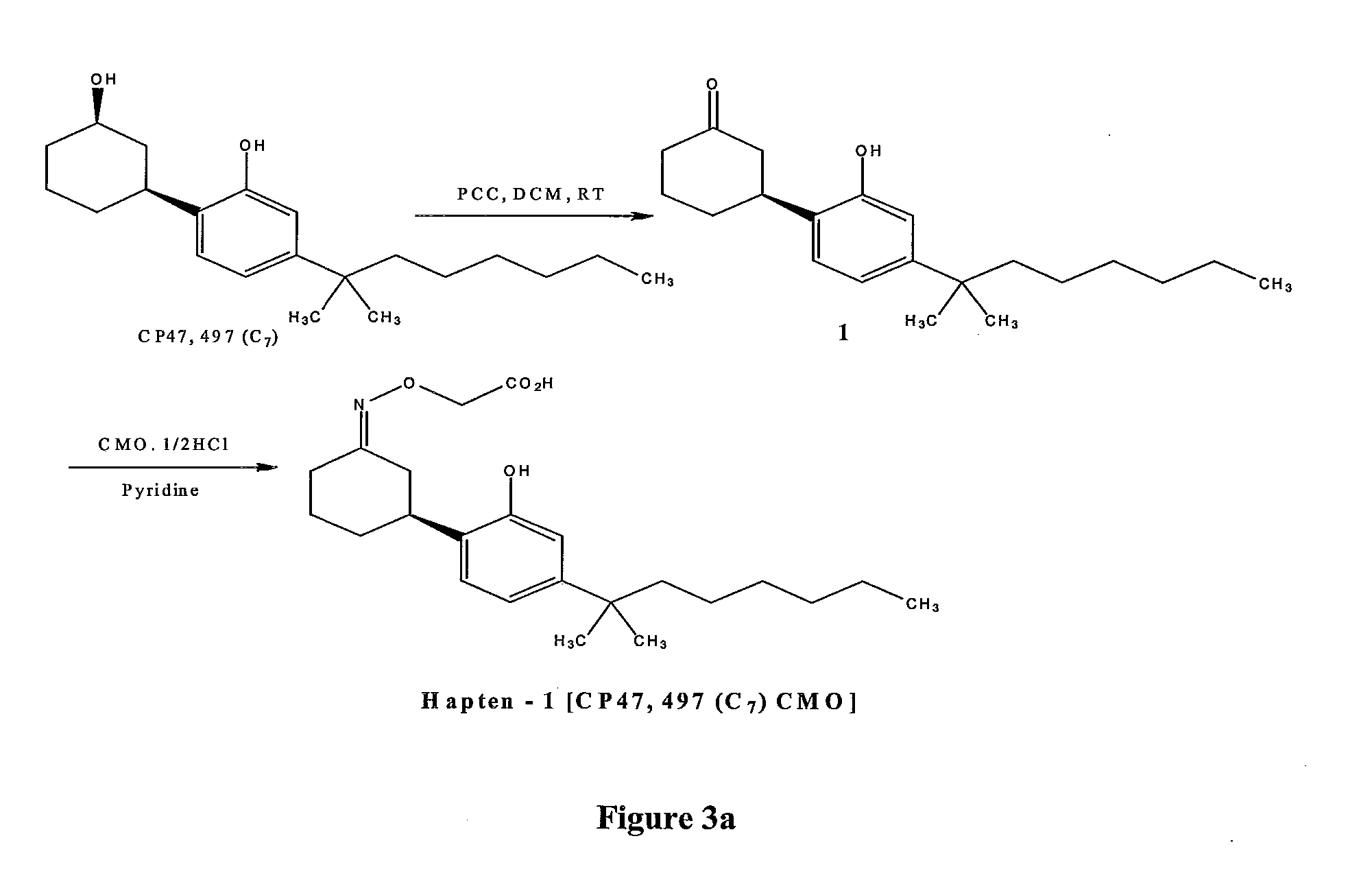Detection of Synthetic Cannabinoids
a synthetic cannabinoid and detection technology, applied in the field of detection of synthetic cannabinoid, can solve the problems of insufficient detection method, insufficient characterisation, and further resource intensive and costly chemical analytical study
- Summary
- Abstract
- Description
- Claims
- Application Information
AI Technical Summary
Benefits of technology
Problems solved by technology
Method used
Image
Examples
example 1
Preparation of the Keto-CP47.497 (C7) 1
[0061]CP47,497 (C7) (CAS 70434-82-1) is supplied as a 10 mg / ml solution in methanol First, it is transferred into 10 ml round bottom flask (165 ml, 165 mg, 0.518 mmol) and the solvent evaporated to dryness under vacuum at room temperature. Anhydrous dichloromethane (DCM) (5 ml) is added and the resulting solution is added drop-wise to a solution of pyridinium chlorochromate (PCC) (167.6 mg, 0.78 mmol) in anhydrous dichloromethane (5 ml) under stirring at room temperature (RT). The reaction mixture was stirred at room temperature for 3 hours. The reaction mixture was filtered on a pad of Celite™, washed with diethyl ether and the solvents were removed in vacuo at room temperature. The residue was dissolved in diethyl ether and taken through a small plug of silica gel, washed with diethyl ether and the solvents were removed in vacuo at room temperature to give the desired product, keto-CP47,497 (C7) 1 (132 mg, 0.417 mmol, 80% yield) as a dark oil...
example 2
Preparation of the CP47,497 (C7)-CMO (CP47,497 (C7) Carboxymethyloxime) (Hapten 1)
[0062]Keto-CP47,497 (C7) 1 (132 mg, 0.417 mmol) was dissolved in pyridine (2 ml) and carboxymethoxylamine hemihydrochloride (CMO.½HCl) (144 mg, 1.04 mmol, 2.5 eq) was added. The reaction mixture was stirred at room temperature overnight. The solvents were evaporated, the residue was partitioned between ethyl acetate and HCl (1M) solution, the layers were separated and the organic layer was washed with brine, dried over sodium sulphate and concentrated in vacuo to give the desired product CP47,497 (C7)-CMO (Hapten 1) (209 mg) as a red-brown oil that was used in the next step without further purification.
example 3
Conjugation of CP47,497 (C7)-CMO (Hapten 1) to BSA—Immunogen 1a
[0063]To a solution of CP47,497 (C7)-CMO (Hapten 1) (15.00 mg, 0.0365 mM) in DMF (2.0 ml) was added EDC hydrochloride (8.85 mg, 0.0462 mM) and N-hydroxysuccinimide (5.4 mg, 0.0462 mM) and the mixture was stirred at room temperature overnight. This solution was added drop-wise to a solution of BSA (50.0 mg, 1.15 μM) in 50 mM sodium bicarbonate solution (pH 8.5) (8.0 ml). The mixture was then stirred overnight at 4° C. The solution was then dialysed against 50 mM phosphate buffer pH 7.2 (3 changes) for 24 hours at 4° C., and freeze-dried to give 43 mg of Immunogen 1a.
[0064]MALDI results showed 9.5 molecules of hapten 1 had been conjugated to one molecule of BSA.
PUM
| Property | Measurement | Unit |
|---|---|---|
| pH | aaaaa | aaaaa |
| pH | aaaaa | aaaaa |
| pH | aaaaa | aaaaa |
Abstract
Description
Claims
Application Information
 Login to View More
Login to View More - R&D
- Intellectual Property
- Life Sciences
- Materials
- Tech Scout
- Unparalleled Data Quality
- Higher Quality Content
- 60% Fewer Hallucinations
Browse by: Latest US Patents, China's latest patents, Technical Efficacy Thesaurus, Application Domain, Technology Topic, Popular Technical Reports.
© 2025 PatSnap. All rights reserved.Legal|Privacy policy|Modern Slavery Act Transparency Statement|Sitemap|About US| Contact US: help@patsnap.com



